 | TODAY IN SCIENCE HISTORY NEWSLETTER - 23 AUGUST |
| Feature for Today |
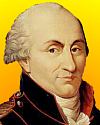 On 23 Aug 1806, a French physicist died, whose name (in the quiz below) should be known to any high school physics student. But beyond the work in electrostatics, for which he is best known, this scientist has been regarded as the pioneer of experimental science in France, as William Gilbert was in England. The fame of both rests principally on their electrical and magnetic researches. On 23 Aug 1806, a French physicist died, whose name (in the quiz below) should be known to any high school physics student. But beyond the work in electrostatics, for which he is best known, this scientist has been regarded as the pioneer of experimental science in France, as William Gilbert was in England. The fame of both rests principally on their electrical and magnetic researches.In his early career, he served as a military engineer for the French army, in which capacity he spent time on the island of Martinique in the West Indies to assist in the construction of Fort Bourbon. He survived the fever that killed many of his comrades, but returned home with chronic health ailments. In 1784, his work on the elasticity of wires led to developing the torsion balance, capable of measuring feeble forces, whch idea was used by Cavendish to determine the density of the earth. At various times in his life, this scientist supervised Waters and Fountains in France, wrote a paper on “Statical Problems applied to Architecture,” and worked with the Commission on Weights and Measures. He observed that the sap of poplar trees ascended near the centre of the trunk, and was mixed with air, which could be tapped by a bore-hole. Yes, this scientist was versatile and his interests ranged wider than the experiments with electricity and magnetism for which he remains best known. If by now you are inclined to learn more of the background of this man, read an interesting chapter from Pioneers of Electricity; or, Short Lives of the Great Electricians (1890). |
| Book of the Day | |
|
| Quotations for Today | |
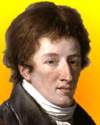 | “The observer listens to nature: the experimenter questions and forces her to reveal herself.” |
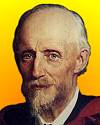 | “[To] mechanical progress there is apparently no end: for as in the past so in the future, each step in any direction will remove limits and bring in past barriers which have till then blocked the way in other directions; and so what for the time may appear to be a visible or practical limit will turn out to be but a bend in the road.” |
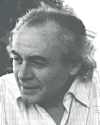 | “Madness need not be all breakdown. It may also be breakthrough.” |
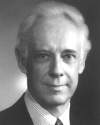 | “Man's health and well-being depends upon, among many things, the proper functioning of the myriad proteins that participate in the intricate synergisms of living systems.” |
| Quiz | |
| Before you look at today's web page, see if you can answer some of these questions about the events that happened on this day. Some of the names are very familiar. Others will likely stump you. Tickle your curiosity with these questions, then check your answers on today's web page. | |
| Births | |
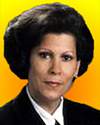 |  On 23 Aug 1944, Antonia Novello was born, a Puerto Rican physician. She became notable both as the first woman and as the first Hispanic to hold a certain public office. On 23 Aug 1944, Antonia Novello was born, a Puerto Rican physician. She became notable both as the first woman and as the first Hispanic to hold a certain public office. In what position did Novello become a notable public official? In what position did Novello become a notable public official? |
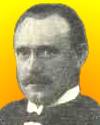 |  William Henry Eccles, Osborne Reynolds and Georges Cuvier were each born on 23 Aug, though in different years. Not in the same order, they were notable for: established the sciences of comparative anatomy and paleontology; work in hydraulics and hydrodynamics; pioneered in the development of radio communication. William Henry Eccles, Osborne Reynolds and Georges Cuvier were each born on 23 Aug, though in different years. Not in the same order, they were notable for: established the sciences of comparative anatomy and paleontology; work in hydraulics and hydrodynamics; pioneered in the development of radio communication. Can you match each scientist to his claim to fame? Can you match each scientist to his claim to fame? |
| Deaths | |
 |  A physicist (1736-1806) was best known for the formulation of his law, which states that the force between two electrical charges is proportional to the product of the charges and inversely proportional to the square of the distance between them. A physicist (1736-1806) was best known for the formulation of his law, which states that the force between two electrical charges is proportional to the product of the charges and inversely proportional to the square of the distance between them. Can you name this man? Can you name this man? |
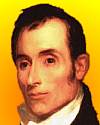 |  Alexander Wilson (1766-1813) was a Scottish-American naturalist who left his homeland in 1794 at age 27. He settled in America, where by he was fascinated by the wildlife, and did pioneering work in a certain field of study. Alexander Wilson (1766-1813) was a Scottish-American naturalist who left his homeland in 1794 at age 27. He settled in America, where by he was fascinated by the wildlife, and did pioneering work in a certain field of study. In what field of study did Alexander spend his great efforts? In what field of study did Alexander spend his great efforts? |
| Events | |
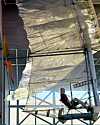 |  On 23 Aug 1977, Bryan Allen won the Kremer Prize for the first human-powered flight as he pedalled a light aircraft for at least a mile at Schafter, California. On 23 Aug 1977, Bryan Allen won the Kremer Prize for the first human-powered flight as he pedalled a light aircraft for at least a mile at Schafter, California. What was the name of his aircraft? What was the name of his aircraft? |
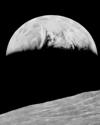 |  On 23 Aug of a certain year, the Lunar Orbiter 1 took the first photograph of the Earth from the Moon. On 23 Aug of a certain year, the Lunar Orbiter 1 took the first photograph of the Earth from the Moon. In what decade was this photograph taken? In what decade was this photograph taken? |
| Answers |
| When you have your answers ready to all the questions above, you'll find all the information to check them, and more, on the August 23 web page of Today in Science History. Or, try this link first for just the brief answers. Fast answers for the previous newsletter for August 22: • Dr. Denton Cooley = heart transplant; Paul Gottlieb Nipkow = TV scanning; Denis Papin = pressure cooker • Lodge's coherer = a radio-wave detector • phrenology = the attempt to divine individual intellect and personality from an examination of skull shape. • Neptune = its first complete ring • The Savannah = the world's first nuclear-powered ship • Fitch's steamboat = 3 mph • |
| Feedback |
 If you enjoy this newsletter, the website, or wish to offer encouragement or ideas, please send feedback by using your mail reader Reply button. If you enjoy this newsletter, the website, or wish to offer encouragement or ideas, please send feedback by using your mail reader Reply button. |
--
If you do not want to receive any more newsletters, Unsubscribe
To update your preferences and to unsubscribe visit this link


Δεν υπάρχουν σχόλια:
Δημοσίευση σχολίου